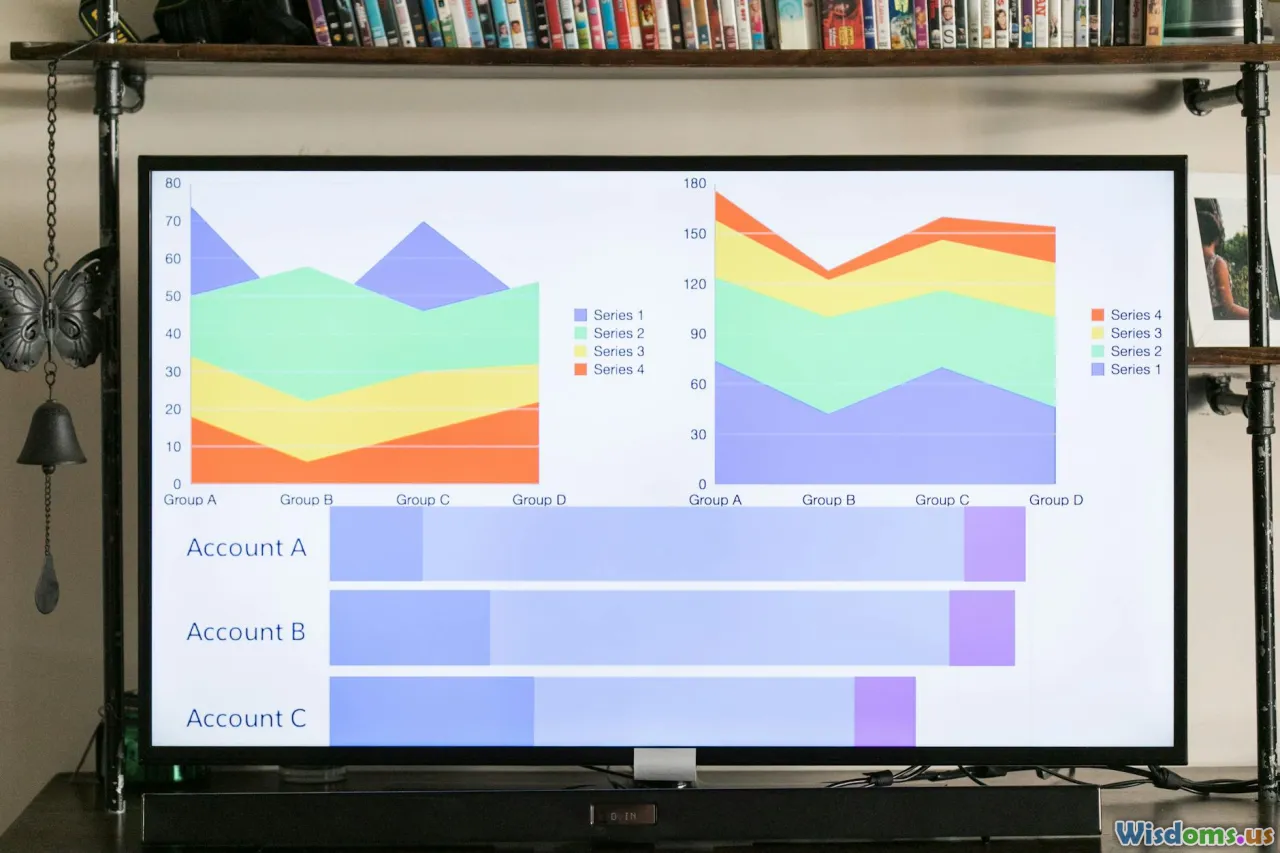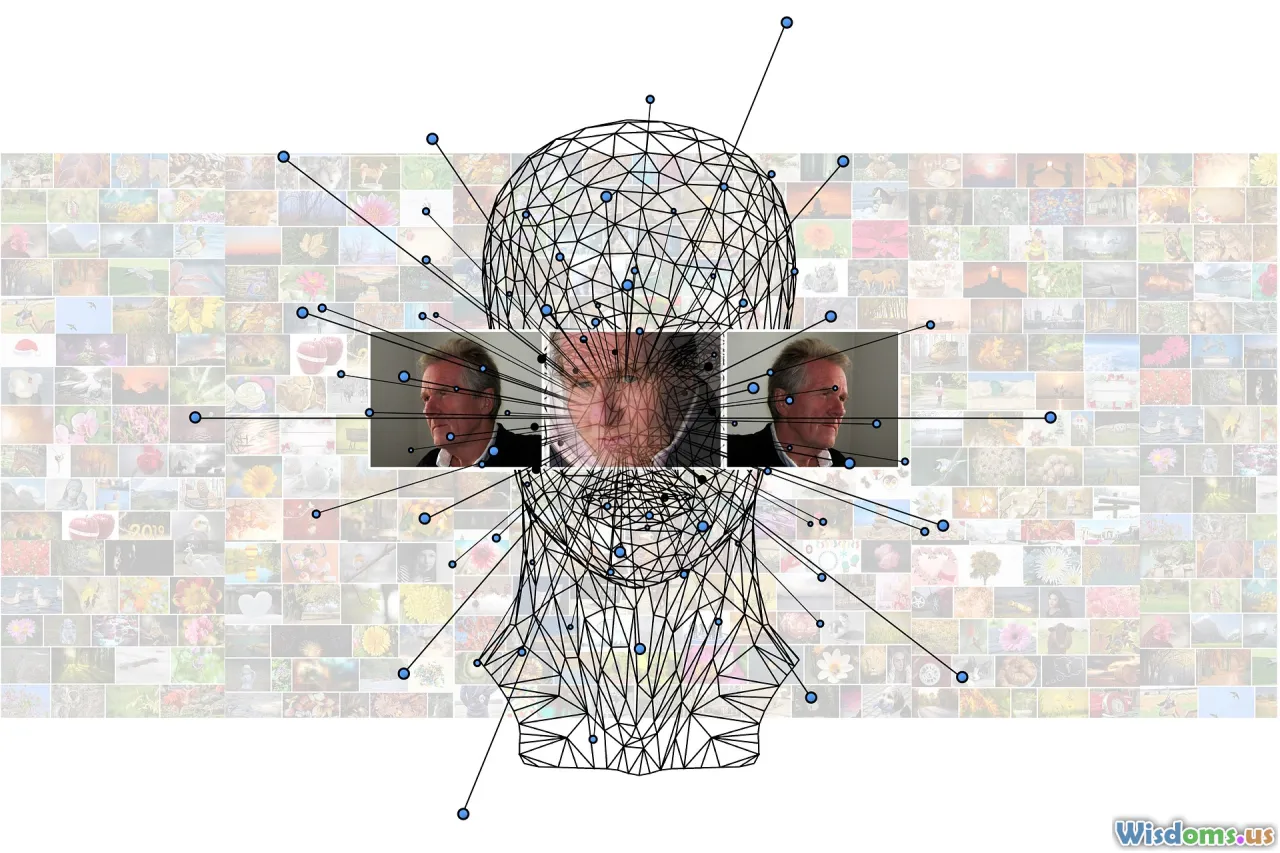
Secrets Behind Successful Predictive IT Maintenance in Finance
34 min read Actionable strategies, data models, and governance practices that power predictive IT maintenance in finance—reducing outages, cutting costs, and meeting compliance while improving uptime across core banking and trading systems. (0 Reviews)
Every financial institution has a story about the outage that taught them humility. A trading platform that froze for eight minutes during a volatile market open. An ATM network that flaked out across a region on a holiday weekend. A core banking database that refused writes after a routine patch. In each of these, the technical story is different, but the business story is always the same: lost revenue, reputational harm, regulatory scrutiny, and an exhausted operations team scrambling under pressure.
Predictive IT maintenance is not just about fancy models or dashboard eye candy. In finance, it is about systematically moving the mean time to failure further out and pulling the mean time to recovery closer in, with a high-confidence signal that something will go wrong and a safe, pre-approved way to prevent it. The secrets behind successful programs are often organizational, procedural, and economic as much as they are algorithmic. This article unpacks those secrets with practical steps, proven patterns, and hard-won lessons tailored for banks, insurers, payment processors, trading firms, and fintechs.
Why predictive maintenance matters more in finance

Financial systems are uniquely sensitive to latency, downtime, and integrity errors. Consider:
- Markets wait for no one. Microsecond spikes in network jitter can trigger automated risk failsafes or cause slippage; seconds of downtime during a market open can cascade through order books, risk engines, and client SLAs.
- Regulatory obligations are unforgiving. SOX, PCI DSS, and local supervisory guidance expect robust controls, change management, and operational resilience; preventable outages invite questions about control design effectiveness.
- Customer expectations are brittle. A payment decline at a point of sale or a mobile app freeze during paycheck deposit is often a one-strike experience.
A widely cited industry estimate from Gartner puts the average cost of IT downtime at thousands of dollars per minute, with large enterprises easily incurring six figures per hour depending on business line. In wholesale banking or high-frequency trading, the numbers can be much higher. Predictive maintenance offers a disciplined way to reduce the probability and impact of incidents by catching failure precursors and intervening early.
Key business objectives it supports:
- Risk reduction: Proactively drain degrading components before they fail (for example, rebalance Kafka partitions off a broker with rising disk errors).
- Cost control: Move from reactive, after-hours firefighting to scheduled maintenance windows and fewer expensive war rooms.
- Resilience: Improve service-level objectives (SLOs) for latency, availability, and correctness.
- Compliance: Demonstrate a repeatable, controlled process with audit trails for forecasts and actions.
Predictive vs preventive vs monitoring: what really changes

Many organizations conflate monitoring, preventive maintenance, and predictive maintenance. The differences matter:
- Reactive monitoring: Alerts when thresholds are breached (CPU at 95%, queue depth above N). Action happens after symptoms appear.
- Preventive maintenance: Time- or usage-based schedules (replace SSDs every X TB written, reboot nodes monthly). Useful but can be wasteful and miss early failures.
- Predictive maintenance: Uses data to estimate failure probability for a component within a future horizon (for example, 24–72 hours) and triggers targeted actions only when risk crosses a threshold.
What changes in predictive programs:
- Decision driver: From static thresholds to risk forecasts that weigh business impact, lead time, and confidence.
- Unit of action: From broad maintenance windows to surgical, component-level interventions.
- Feedback loop: Continuous learning from outcomes, not one-off postmortems.
- Cross-functional alignment: SRE, IT operations, security, data science, and business owners converge around a single operational playbook.
Example: A payments API gateway cluster shows a rising trend of TLS handshake failures and kernel soft IRQ saturation during peak hours. Traditional monitoring would page on high CPU; preventive maintenance might call for monthly reboots. Predictive maintenance, however, correlates handshake errors, soft IRQs, and increased interrupt coalescing configuration changes to forecast a 60% chance of latency SLO breaches in the next 48 hours. The action: switch NIC interrupt affinity and preemptively scale out two additional gateways before Friday payroll spikes.
The data that powers predictive maintenance

High-precision predictions are built on a rich, well-governed data foundation. Financial IT offers abundant sources:
- System telemetry: CPU throttling, cache misses, memory pressure (OOM killer signals), disk I/O latency, SMART attributes, network retransmits, NIC driver counters, GPU ECC errors.
- Application metrics: GC pause times, thread pool saturation, queue depths, database connection pool usage, error rates by endpoint.
- Logs and traces: Structured logs from core banking services, FIX gateways, Kafka brokers; distributed traces via OpenTelemetry to capture end-to-end flow timing.
- Environment sensors: Data center temperature, humidity, power quality (UPS load, voltage sags), rack-level hot spots.
- Cloud provider signals: CloudWatch anomalies, Azure Monitor platform metrics, GCP Ops Agent logs; spot instance interruptions or scheduled maintenance events.
- Change and config data: CMDB and infrastructure-as-code diffs (Terraform, Ansible), patch deployments, firmware updates, feature flags, canary rollout events.
- ITSM and incident data: ServiceNow tickets, incident severities, root causes, remediation steps; these form ground truth labels.
- User-experience analytics: Real user monitoring on mobile/web, ATM transaction declines, call center topics tied to technical triggers.
Quality matters more than quantity. Three practices make data reliably useful:
-
Data contracts and observability: Define schema, freshness, and completeness expectations for every feed. Use tools like Great Expectations to enforce them. Missing metrics are a silent failure mode.
-
Identity resolution: Map telemetry to business services and assets via a service catalog. A disk's SMART error means little until you know it underpins a market data cache used by the equities desk.
-
Time alignment: Standardize timezones and sync clocks (NTP/PTP) across systems; finance shops regularly trip over daylight saving time anomalies that misalign windows and break feature extraction.
Feature engineering that actually predicts failures

Most predictive lift comes from domain-aware features, not model wizardry. For IT assets in finance, consider:
- Trend and acceleration: Rolling slopes for latency, retransmits, or I/O queue times. Example: a steady increase in 99th percentile order-routing latency over three days, with accelerating slope, is more predictive than a single spike.
- Seasonality-aware baselines: Compare against day-of-week and hour-of-day patterns. Friday payroll cycles, month-end batch runs, and market opens create predictable load waves.
- Burstiness and tail metrics: Coefficients of variation, high-percentile latencies, and peak-to-mean ratios often move before averages do.
- Error composition: Ratios of error types (timeout vs 500 vs 429) indicate different failure precursors; a rise in transient timeouts plus queue depth often precedes cascading failures.
- Hardware pre-failure signals: SMART reallocated sector count deltas, NVMe media errors, PCIe correctable error rates, DIMM correctable ECC to uncorrectable ECC ratio trends.
- Resource coupling indicators: Cross-correlation between app latency and GC pauses, or between network retransmits and kernel softirqs on specific cores.
- Configuration drift markers: One-hot encodings for kernel, driver, and firmware versions; after a given firmware patch, error patterns often shift.
- Workload mix: Feature the proportion of read vs write operations, or FIX message types by venue; different mixes stress different subsystems.
Concrete examples:
- Kafka broker predictors: Page cache miss ratio, filesystem flush latency, ISR (in-sync replica) churn, controller election counts, and fetch request timeouts predicted broker degradation 12–48 hours ahead for one bank's market data pipeline.
- Database node predictors: Increasing checkpoint write times, rising lock wait variance, and tempdb spill frequencies signaled a 30% higher chance of an incident in the next day during quarter-end processing.
- API gateway predictors: TLS handshake failures clustered by client ASN combined with SYN backlog growth forecasted a 50% risk of SLO breach unless autoscaling or BPF-level mitigations were applied.
Labeling the target is equally crucial: define 'failure' precisely (for example, SLO breach of p99 latency > 400 ms for 15 minutes or a P1 incident logged). Use prediction horizons that match actionable lead time (24–72 hours for hardware wear; 1–4 hours for congestion effects; minutes for burst mitigations). Vary horizons by asset type.
Modeling choices that fit operational reality

There is no one best algorithm. The right choice depends on the asset, data volume, and required interpretability:
- Supervised classification: Gradient-boosted trees or random forests on engineered features to predict failure within the next K hours. Strong baseline for tabular data with mix of numeric/categorical features.
- Time-to-event modeling: Cox proportional hazards or accelerated failure time models incorporate censoring and produce survival curves; useful for disks, power supplies, or SSL cert expirations where hazard rates evolve.
- Anomaly detection: Isolation Forest, robust PCA, or Prophet-like decomposition for seasonality; good for services with unstable labels. Use as early-warning signals rather than direct automation triggers.
- Deep time series: Temporal CNNs or transformers for dense telemetry; effective but heavier to operationalize and harder to explain to risk and audit.
- Bayesian models: Capture uncertainty explicitly and fuse domain priors (for instance, known impact of a firmware bug) with data.
Operational tips:
- Favor interpretable baselines first. Trees with SHAP values allow engineers and auditors to see which features drove a prediction.
- Calibrate probabilities. Use Platt scaling or isotonic regression so a 0.7 risk score actually means ~70% risk historically; this supports business-impact thresholding.
- Consider multi-stage models. Stage 1 anomaly detection triggers Stage 2 supervised classification to filter noise.
- Retrain cadence: Refresh models weekly for fast-moving telemetry, monthly for hardware wear, and immediately after major platform changes.
The real secrets: process and alignment, not just models

Successful programs share several non-obvious traits:
- Business-impact scoring: Every asset and service has a weight. A payment switch node supporting a high-revenue merchant cohort warrants a lower action threshold than a low-traffic dev proxy. Encode this as a service criticality index and multiply it into the risk score.
- Ground-truth discipline: Treat incident and change tickets like labeled data. Enforce consistent root-cause categories and link them to assets and time windows. Garbage labels equal garbage models.
- Guarded automation: Start with predict-and-drain (move workloads off a risky node), not hard reboots. Gate actions through change windows, rate limits, dependency checks, and blast-radius controls.
- Runbooks as code: Convert tribal knowledge into version-controlled runbooks that can be executed automatically after approval. Include prechecks, rollbacks, and telemetry validation.
- Model risk governance: Finance already knows how to manage model risk. Apply SR 11-7 style practices: documentation, validation, challenger models, and periodic reviews.
- Communication rhythm: Standups where SREs and data scientists review top-risk assets for the next 72 hours, confirm or override actions, and capture outcomes for feedback.
- Incentives aligned: Tie team goals to reductions in P1 incidents, prediction precision at action threshold, and avoided downtime, not to model accuracy alone.
A reference architecture for the maintenance pipeline

A pragmatic blueprint:
- Ingestion and normalization
- Telemetry from Prometheus, CloudWatch, Azure Monitor, and on-prem SNMP flows; logs via Fluent Bit into Kafka.
- Schema registry to enforce structure; normalization for units and timezones.
- Data quality and lineage
- Great Expectations tests; data contracts with producers; lineage via OpenLineage to trace predictions back to sources for audits.
- Feature store
- Centralized repository (for example, Feast) for computed features with time-travel to avoid leakage.
- Modeling and registry
- Training pipelines on Spark or Pandas; MLflow to track versions, metrics, and artifacts; champion/challenger deployment.
- Decision engine
- Business rules plus model outputs to produce an action plan. Encodes service criticality, maintenance windows, and confidence thresholds.
- Orchestration and execution
- Airflow or Dagster schedules jobs; SOAR/RBA tools (StackStorm, Rundeck) execute runbooks; integrate with ITSM (ServiceNow) for approvals and change records.
- Feedback loop
- Outcomes written back to the feature store and label repository; post-action telemetry checks; auto-tune thresholds.
- Observability and dashboards
- Grafana to visualize risk heatmaps; Jira/ServiceNow widgets for upcoming risk; on-call tools (PagerDuty) for human-in-the-loop confirmations.
Operationalizing predictions: thresholds, costs, and playbooks

Predictions only matter when they trigger the right action at the right time. Frame decisions as cost trade-offs:
- False positive cost: Unnecessary drain or reboot consumes engineer time, maintenance window, or cloud capacity; may cause minor customer impact.
- False negative cost: Outage during market hours or payroll processing; potential regulatory reporting and reputational damage.
A useful approach:
- Define an action threshold per service based on business impact. A high-impact trading service might act at 0.35 predicted risk in the next 24 hours; a low-impact batch system at 0.7.
- Choose a prediction horizon aligned with lead time to mitigate. For disks, you may need 24–72 hours to migrate; for a JVM hotspot, 30–90 minutes is fine.
- Establish playbooks by risk level:
- Low risk: Increase monitoring resolution; schedule a health check; no change ticket yet.
- Medium risk: Create a pre-approved change request; prepare canary node; drain connections or move partitions.
- High risk: Auto-execute approved runbook; notify stakeholders; enforce rollback guardrails.
Example playbook: Core payments database node predicted at 0.58 failure risk within 12 hours due to growing checkpoint latency and log flush stalls.
- Step 1: Validate with burst workload test and compare read vs write amplification.
- Step 2: Drain read replicas to distribute read load; spin up one replica in hot standby.
- Step 3: Increase log buffer size per approved param set; monitor write latency for 10 minutes.
- Step 4: If no improvement, failover to hot standby during the pre-approved maintenance window and page DBA on-call.
Track operational KPIs:
- Mean prediction horizon (how much time you buy on average).
- Action rate and success rate (what fraction of predictions led to actions that prevented incidents).
- Precision at action threshold (how often an action-worthy prediction corresponded to a true risk).
- MTTR and incident severity distribution before and after.
Security, privacy, and compliance in a regulated world

Predictive maintenance pipelines often ingest data that could be sensitive:
- Ensure data minimization: Strip PII from logs; use hashing or tokenization where correlation is needed without exposing identity.
- Encryption and access controls: Encrypt at rest and in transit; apply role-based access with just-enough privilege; audit access.
- Model governance: Document model purpose, data sources, performance, and limitations. Maintain an inventory with owners and review cycles.
- Auditability: Keep immutable logs (WORM storage) of predictions, thresholds, overrides, and actions; capture evidence for regulators and internal auditors.
- Vendor and third-party risk: If using cloud services or external libraries, ensure they meet organizational standards and regional data residency requirements.
Also account for change management integration: actions triggered by predictions should create or link to approved change records with rollback plans, ensuring alignment with regulations and internal policies.
Common failure modes and how to avoid them

- Data drift: Workload patterns change after a product launch or market regime shift. Mitigate with drift detection on feature distributions and periodic retraining.
- Topology blind spots: New services or assets missing from the service catalog make predictions incomplete. Automate discovery and reconcile CMDB with reality.
- Label leakage: Using post-failure diagnostics as features for pre-failure predictions inflates metrics. Use event-time joins and strict time windows.
- Maintenance-induced failures: Predictive actions can cause incidents if not guarded. Simulate runbooks in staging; enforce dependency and blast-radius checks.
- Seasonality surprises: Month- and quarter-end spikes break naive baselines; encode calendars and blackout windows explicitly.
- Vendor bugs: Firmware or driver updates may mask or alter error counters; build version-aware features and keep compatibility matrices.
- Time sync issues: NTP/PTP misalignment causes correlation illusions; alert on clock drift beyond tight thresholds.
- Cloud ephemerality: Instance replacements and autoscaling disrupt per-node histories; stitch identity using instance metadata and service-level features.
The economics: proving ROI and funding the roadmap

Executives will ask: what is the payback? Build a simple, credible model:
- Baseline incident cost: Use historical P1/P2 incidents; estimate direct costs (operations hours, vendor fees) and indirect costs (lost trades, customer churn). Keep ranges conservative.
- Avoided incident rate: Based on pilot results, estimate the fraction of at-risk events caught early and successfully mitigated.
- Cost of action: Engineer time for analysis and runbook execution, additional cloud capacity for draining, hardware spares.
- Tooling and maintenance: Platform engineering and vendor licensing.
An illustrative calculation:
- Historical: 20 P1 incidents per year with an average cost range of mid five to low six figures each. Assume a modest blended average for planning.
- Predictive program: Target a 25–40% reduction in P1s and a 15–25% reduction in P2s in year one for the scoped systems.
- Net: Even with conservative assumptions, the program produces positive ROI within 12–18 months, especially when factoring softer benefits like improved auditor confidence and reduced staff burnout.
Track ROI transparently in a dashboard that ties avoided incidents to specific predictions and actions.
A realistic, anonymized case study

A mid-size retail bank operating in two regions launched a predictive IT maintenance initiative to shore up reliability during a core modernization program. Scope in phase one:
- ATM and POS acquiring network across 2,000 locations.
- Core banking database cluster on-prem with cloud-read replicas.
- API gateway for mobile and online banking.
Data foundation:
- Telemetry from Prometheus on-prem and CloudWatch in the cloud, logs centralized in an ELK stack, OpenTelemetry traces across the gateway and core services.
- Incident labels standardized in ServiceNow; change events from Terraform and Ansible pipelines joined via a change ID.
Models and features:
- ATM network: Gradient-boosted trees using features like packet loss variance by circuit, temperature sensors in branches, router CPU soft IRQs, and carrier change tickets near locations. Prediction horizon: 24 hours.
- Core DB: Cox model with features like checkpoint latency slope, write-ahead log sync jitter, disk I/O queue length acceleration, and patch levels. Horizon: 48–72 hours.
- API gateway: Calibrated classifier on handshake errors, SYN backlog growth, GC pause distributions, and client ASN outliers. Horizon: 6–12 hours.
Process and tooling:
- Weekly champion/challenger review; SHAP explanations attached to each high-risk prediction in a Grafana panel.
- Guarded actions via Rundeck runbooks; pre-approved changes for replica promotion and gateway scale-outs; draining steps limited to one node per cluster at a time.
Six months later, the bank reported:
- Double-digit percentage reduction in P1 incidents for the scoped systems.
- Mean prediction horizon of ~18 hours for the ATM network and ~36 hours for the core DB, sufficient to schedule targeted maintenance.
- A sharp drop in midnight fire drills; most mitigations occurred within business hours.
- An unexpected win: fewer false fraud flags linked to ATM timeouts, as network reliability improved.
The effort succeeded not because the bank invented a new algorithm, but because they defined action thresholds by business impact, enforced data and label quality, and embedded the process into change management.
The practical toolkit: technology options that work

Open-source and commercial components that frequently fit well:
- Telemetry and pipelines: Prometheus, Grafana, Fluent Bit/Fluentd, Kafka, Spark/Flink for stream processing.
- Tracing and schema: OpenTelemetry, Confluent Schema Registry or open-source alternatives.
- Data quality and lineage: Great Expectations, OpenLineage/Marquez.
- Feature store and ML ops: Feast for features, MLflow for experiment tracking and model registry, Kubeflow or Airflow/Dagster for orchestration.
- Cloud-native: AWS CloudWatch Anomaly Detection, AWS DevOps Guru for application anomalies, Azure Monitor with Dynamic Thresholds, GCP Cloud Monitoring; BigQuery or Snowflake for analytics.
- ITSM and automation: ServiceNow, Jira Service Management, Rundeck, StackStorm, PagerDuty Event Orchestration.
Selection criteria:
- Integration with your observability stack and CMDB.
- Audit readiness (lineage, access control, immutable logs).
- Ease of embedding business rules and approvals in the decision flow.
- Operability at scale and vendor viability within your regulatory constraints.
A 90-day starter plan you can adopt

Days 1–30: Frame and seed
- Pick two services with clear business impact and available telemetry (for example, a messaging backbone and a payment API gateway).
- Define failure labels and prediction horizons with SREs and business owners.
- Stand up a basic pipeline: ingest metrics and logs, normalize, and implement data quality checks.
- Build a baseline model (gradient-boosted trees) and a simple anomaly detector; instrument SHAP explanations.
- Draft runbooks with prechecks and rollbacks; get pre-approvals for low-risk mitigations.
Days 31–60: Pilot and iterate
- Deploy models in shadow mode; display risk scores in Grafana alongside live telemetry.
- Calibrate thresholds using historical backtests and a few weeks of live data.
- Run human-in-the-loop actions for top predictions; record outcomes meticulously.
- Add business-impact weights and change window rules to the decision engine.
Days 61–90: Operationalize
-
Enable guarded automation for low-blast-radius actions (predict-and-drain scenarios).
-
Integrate with ServiceNow to auto-create change records and capture approvals.
-
Publish a dashboard with KPIs: prediction horizon, action success rate, precision at threshold, and incident trends.
-
Prepare model governance documentation and schedule quarterly model validations.
Deliverables at day 90: one pager for executives with ROI estimate and roadmap; validated runbooks; documented models and controls; a small but real reduction in P1/P2 incidents.
KPIs and dashboards that keep everyone aligned

Track metrics that link models to outcomes:
- Lead time to mitigate: Median time between prediction crossing threshold and action completion.
- Precision and recall at action threshold: By service tier; precision matters for trust, recall for risk coverage.
- False alert rate: Share of predictions that did not require action after human review.
- Prevented incident count: Tie to severity and business-line impact; include human-validated notes.
- Change-induced incident rate: Monitor whether mitigations themselves cause issues; your goal is net risk reduction.
- Drift indicators: Population stability index or similar for critical features.
- Prediction coverage: What percentage of assets and critical transactions are under predictive surveillance.
Dashboards should be role-aware:
- Engineers: Feature movements, top SHAP contributors, and runbook outcomes.
- Managers: Trend lines for incidents, action success rate, and ROI estimates.
- Risk/compliance: Model inventory, validation status, lineage, and audit logs of overrides.
Culture: making it stick beyond the pilot

Culture either accelerates or stalls predictive maintenance initiatives.
- Blameless postmortems feed the model: Codify root causes and label windows precisely; avoid vague conclusions that cannot be modeled.
- SRE and data science pairing: Weekly working sessions to review top risks, tune features, and refine runbooks.
- Education and transparency: Share how models work, what features matter, and where uncertainty is high; this builds trust and reduces fear of automation.
- Incentives: Recognize engineers who improve label quality, runbook safety, and model interpretability, not just those who ship new models.
- Production-first mindset: Ship small, safe automations early. Celebrate reduced pager fatigue and fewer night calls.
What is next: trends shaping predictive IT maintenance in finance

- Richer telemetry via eBPF: Kernel-level visibility without intrusive agents, enabling earlier detection of network and IO pathologies.
- Open standards everywhere: OpenTelemetry traces and metrics improve cross-stack correlation and model portability.
- Confidential computing: Train and run models on sensitive operational data with hardware-based memory encryption.
- SmartNICs and DPUs: Offload packet processing and telemetry, with lightweight anomaly detection on the edge of the network path.
- Generative AI copilot for runbooks: Natural-language explanations of risks and guided remediation steps, with strict guardrails and human oversight.
- Digital twins of critical services: Simulate the impact of maintenance actions on transaction flows in staging before executing in production.
Predictive maintenance is a discipline, not a product. In finance, where milliseconds can carry price tags and trust is currency, the payoff of doing it right is outsized. Focus on the plumbing and the playbooks as much as the models, align thresholds with business impact, and keep the feedback loop tight. The result is not just fewer firefights, but a calmer, more resilient organization that can keep promises to customers and regulators even when the unexpected happens.
Rate the Post
User Reviews
Other posts in Automation in IT Operations (AIOps)
Popular Posts
















